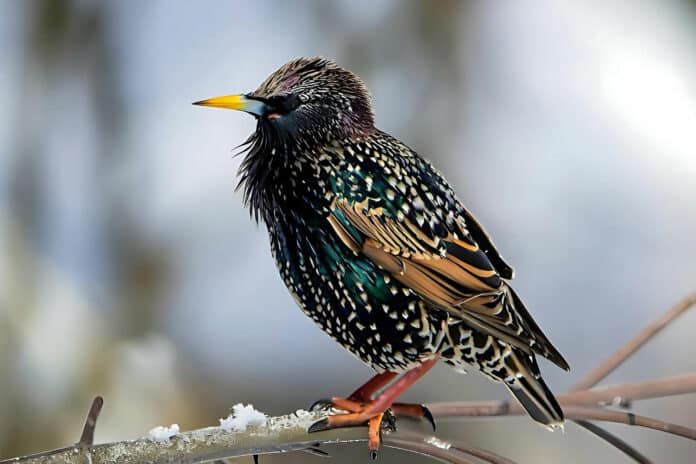Birds are well known for their vocalizations. Their sound is believed to be instinctual. Moreover, many bird species are flexible, vocal learners.
Vocal learning is a trait that is critical for language development and is linked to complex cognition. A new study by Rockefeller University used behavioral experiments in over 20 species of North American birds to determine whether vocal learning in songbirds was related to various cognitive skills.
The European starling is ranked among the most advanced avian vocal learners. These starlings are also superior problem solvers, suggests a new study.
Only the most intelligent animals are believed to be capable of complex vocal learning. If true, then complex vocal learners should also be better at cognitive tasks. However, no one had ever demonstrated that before.
The number of songs and sounds in a bird’s repertoire, whether the bird can continue to learn new songs and calls throughout its life, and whether the bird can mimic other species are the metrics scientists use to rate the vocal learning complexity of songbirds.
They spent three years catching hundreds of wild birds from 21 species in mist nets at The Rockefeller University Field Research Center. The aim was to determine whether vocal learning is linked to different cognitive abilities in songbirds.
Scientists found three frontrunners that ranked the vocal learning capabilities: starlings, blue jays, and gray catbirds (relatives of mockingbirds). These were also the only three capable of mimicking other species.
The scientists then conducted a series of cognitive tests on 214 birds from 23 species, including two species bred in a lab and the wild birds. They tested problem-solving abilities by challenging the birds to remove a lid, pierce foil, or pull a stick to retrieve a treat.
Self-control was measured by establishing a clear barrier between each bird and a snack and timing how long the birds would stop bumping against the barrier and navigate past it.
Other experiments looked at the birds’ ability to learn to link a given color to a food reward and their speed of adjustment when the associated color changed.
Statistics showed a significant relationship between oral learning skills and problem-solving skills. Starlings, bluejays, and catbirds were most skilled in puzzle-solving and vocal learning. A bird’s vocal learning capacity increased in complexity as it became more adept at navigating obstacles to obtain treats. The other cognitive tests and the intricacy of voice learning did not correlate.
Scientists also found that advanced vocal learners and problem solvers had larger brains relative to the sizes of their bodies—a potential biological basis for the observations.
Jean-Nicolas Audet, a research associate in the laboratory of Erich Jarvis at Rockefeller University, said, “Our next step is to look at the brains of the most complex species and try to understand why they are better at problem-solving and vocal learning. We have a pretty good idea of where vocal learning happens in the brain, but it’s unclear where problem-solving occurs.”
Overall, the findings suggest that vocal learning, problem-solving, and brain size may have evolved in tandem, perhaps to increase biological fitness. Based on these findings, as well as earlier work on the ability of vocal learners to dance to a rhythmic beat, scientists now call this collection of traits the “vocal learning cognitive complex.”
The results of this study support the notion that the evolution of a complex behavior like spoken language, which depends on vocal learning, is associated with the co-evolution of other complex behaviors.
Journal Reference:
- Jean Nicolas Audet, Erich. D. Jarvis et al. Songbird species that display more complex vocal learning are better problem-solvers and have larger brains. Science. DOI: 10.1126/science.adh3428
